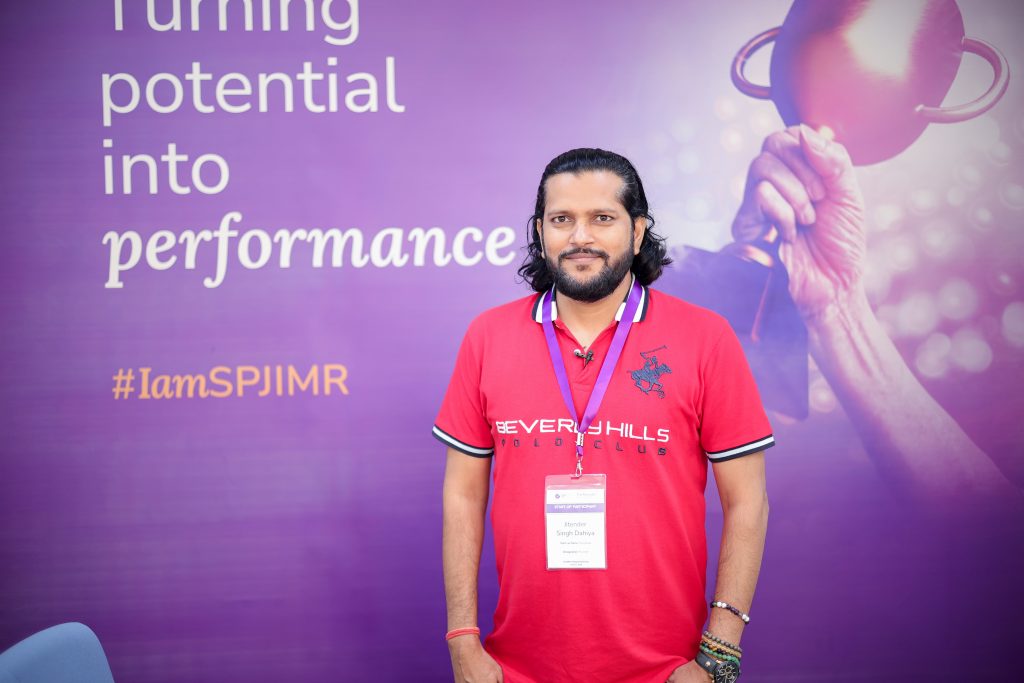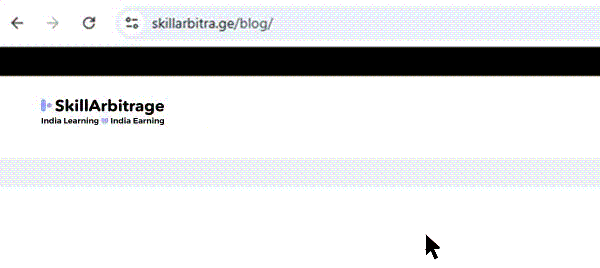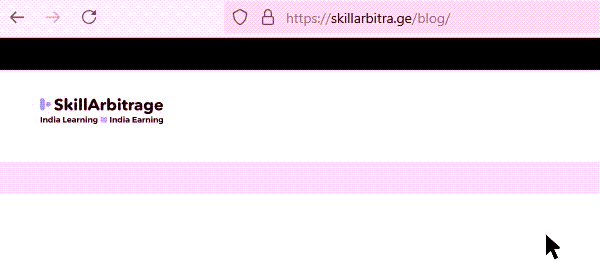
Q1. You’ve held key roles at various prominent banks, including HDFC, YES Bank, CBOP Bank, ABN AMRO Bank, and ICICI. Can you share how your experiences in different organizations have shaped your leadership style and approach to banking management?
Over the course of my tenure at various leading banks, my leadership style has evolved significantly, drawing from diverse experiences and challenges encountered. Primarily, I integrate a blend of leadership styles:
- Democratic Leadership: My exposure to different organizational structures and team dynamics has instilled a participatory leadership approach. Encouraging team collaboration and soliciting inputs aids in effective decision-making, fostering a sense of ownership among team members.
- Transformational Leadership: My experience has underscored the significance of inspiring a shared vision and motivating teams toward common goals. By empowering individuals and emphasizing continuous improvement, I strive to catalyze positive change within the banking environment.
- Coach-Style Leadership: Throughout my roles, I’ve developed a keen focus on nurturing talent and fostering growth among team members. Leveraging mentorship, guidance, and skill development initiatives has been pivotal in enhancing team performance and individual capabilities.
These leadership approaches have been shaped through diverse challenges, enabling me to tailor my style to suit varied scenarios, team compositions, and organizational goals. The amalgamation of these leadership styles has allowed me to adapt and lead effectively in the ever-evolving landscape of banking management.
Q2. In your current role as the Co-founder and CEO of Paykio (Rocket Pay Pvt. Ltd.), you’ve been involved in developing and implementing the overall strategy and vision of the company. How has your banking background influenced your approach to leading a fintech startup, and what challenges have you encountered in this transition?
Transitioning from the banking sector to leading a Fintech startup, Paykio has been a dynamic journey, harnessing lessons and insights from my banking background:
- Strategic Vision: My banking experience emphasized strategic planning and vision-building. This expertise has been instrumental in framing Paykio’s trajectory, aligning business objectives with market needs, and envisioning scalable solutions for cross-border utility payments and fund transfers.
- Customer-Centric Approach: Banking instilled a strong focus on customer relationships. This has driven the creation of a user-friendly platform at Paykio, reflecting my understanding of client needs and delivering solutions that prioritize user experience.
- Risk Management: Banking inherently involves risk assessment and mitigation. This expertise has been invaluable in navigating regulatory compliance, ensuring secure transactions, and implementing robust risk management practices at Paykio.
- Adaptability to Innovation: Fintech demands agility and a penchant for innovation. My banking tenure cultivated an appreciation for technological advancements. This has facilitated the integration of cutting-edge technologies into Paykio’s platform.
Challenges in this transition have revolved around:
- Agility vs. Corporate Structure: Transitioning from a structured banking environment to a nimble startup required adapting to a faster-paced, flexible work culture.
- Regulatory Shift: Fintechs operate in a distinct regulatory landscape. Navigating these nuances while ensuring compliance with regulations has been a learning curve.
- Mindset Shift: Encouraging an entrepreneurial mindset and fostering an innovative culture among teams has been pivotal in embracing a startup ethos within Paykio.
In essence, my banking background has been pivotal in shaping my leadership approach at Paykio, offering a strategic, customer-centric, and risk-aware perspective while embracing the agility and innovation intrinsic to the fintech realm.
Q3. Throughout your career, you’ve demonstrated a strong focus on building and maintaining relationships with stakeholders. How do you navigate and cultivate relationships with both internal and external partners, and what role do these relationships play in the success of your initiatives?
Throughout my career, building and nurturing relationships with stakeholders has been a cornerstone of my approach:
- Internal Stakeholder Engagement: Internally, I emphasize consistent communication, fostering collaboration, and aligning goals across teams. Regular interactions, whether through meetings or discussions, help in understanding various perspectives, gaining support, and ensuring that initiatives are synchronized with broader organizational objectives. These relationships serve as the foundation for cohesive teamwork and drive collective success.
- External Partner Relationships: Externally, I focus on establishing trust, credibility, and mutually beneficial partnerships. This involves active engagement with clients, associations, government bodies, and industry influencers. Understanding their needs, providing value, and ensuring a transparent and respectful approach is key to nurturing these external relationships. These connections are instrumental in business development, client acquisition, and exploring new opportunities.
The significance of these relationships in the success of initiatives is paramount:
- Support and Buy-In: Strong internal relationships garner support for initiatives, ensuring smoother implementation and enthusiastic participation from colleagues.
- Client-Centric Approach: External relationships are the backbone of client satisfaction. Understanding their needs and maintaining robust connections lead to a client-centric approach, enhancing the success and longevity of initiatives.
- Business Expansion: External partnerships often pave the way for new collaborations, ventures, or opportunities, contributing significantly to business growth and expansion.
In essence, both internal and external relationships are pivotal. They foster collaboration, support, and a conducive environment for successful initiatives, ensuring a harmonious ecosystem that drives both organizational growth and client satisfaction.
Q4. As the Liability Product Manager at YES Bank, you were actively involved in strategic alliances and tie-ups. Can you share a specific success story or an innovative approach you took to develop partnerships that significantly impacted the business?
During my tenure as the Liability Product Manager at YES Bank, spearheading strategic alliances and tie-ups for business development was a pivotal aspect:
- Pioneer Strategic Alliances: Successfully initiated the signing of the first Bizconnect agreement in the North Zone, establishing a significant collaboration for the bank. Additionally, facilitated the signing of multiple Memorandums of Understanding (MOUs) with various Trade Associations, fortifying our network and outreach.
- Organizing Knowledge Events: Over a span of six months, orchestrated more than 15 comprehensive physical and digital events and webinars. These events were pivotal in not just gathering substantial data from over 500 prospective leads but also in disseminating this information to relevant stakeholders for effective follow-up.
- Targeted Marketing Campaigns: Strategically devised and executed 12-15 for impactful marketing campaigns within Local Industrial Associations. These campaigns resulted in a noteworthy lead generation of 50-100 prospects from each event, significantly contributing to the business opportunities and growth.
- Active Engagement in Events: Actively participated in and organized 4-5 association meetings, conferences, seminars, workshops, and webinars. This proactive involvement allowed the bank to effectively represent itself on these diverse platforms, fostering engagement with potential clients and organizers.
- Stakeholder Relationship Building: Consistently engaged in regular meetings aimed at fostering robust relationships with stakeholders, key influencers within the MSME segment, and various trade associations. This proactive engagement facilitated stronger connections and partnerships.
- Management of Association Relationships: Efficiently managed significant associations such as PHD Chamber, NSIC, EEPC, IEEMA, DMA, AHPI, SMTA, AINA, NRAI, SIB, NSEZ, ACCI, and numerous other national and local-level associations. This involved active participation, nurturing relationships, and harnessing these connections for the bank’s benefit.
Q5. In your role as the Regional Product Sales Manager at YES Bank, and Territory Head with HDFC Bank, you emphasized the importance of team handling and performance management. How do you motivate and develop your team members to achieve both personal and organizational goals?
In my roles as the Regional Product Sales Manager at YES Bank and Territory Sales Head at HDFC Bank, nurturing and elevating team performance was paramount:
- Motivation through Vision: I inspired team members by aligning their personal goals with the broader organizational vision. Encouraging them to visualize their role in the company’s success empowered them to strive for both personal and organizational achievements.
- Continuous Training and Development: Regular training sessions and skill enhancement workshops were key. I invested in the team’s professional growth, ensuring they were equipped with updated knowledge and skill sets to excel in their roles.
- Performance Tracking and Feedback: I implemented a feedback-driven approach, providing regular performance assessments and constructive feedback. Recognizing their achievements and guiding them on areas of improvement boosted their morale and encouraged growth.
- Empowerment and Trust: Empowering team members with autonomy in decision-making and problem-solving instilled a sense of ownership and responsibility. Trusting them to make decisions led to increased confidence and accountability.
- Goal Setting and Monitoring: Collaboratively setting achievable yet challenging goals, and consistently monitoring progress, helped in fostering a culture of accountability and ambition.
- Mentoring and Support: Offering mentorship and support in navigating challenges or uncertainties was crucial. This mentorship aided in their personal development, boosting their confidence and overall performance.
- Recognition and Reward: Acknowledging and rewarding exceptional performance through incentives, recognition programs, or career advancement opportunities reinforced the value placed on their efforts.
By implementing these strategies, I aimed not only to elevate individual team members but also to create a motivated and high-performing team that collectively contributed to the achievement of organizational objectives.
Q6. You’ve been recognized for your performance at HDFC Bank, achieving a top-three position in your region for four consecutive years. What strategies did you implement to consistently achieve high performance, and how did you navigate challenges in the competitive banking landscape?
In my tenure at HDFC Bank, achieving a top-three position in the region for four consecutive years was a result of several key strategies:
- Strategic Stakeholder Engagement: Regular interactions and engagement with regional, circle, and cluster leaders, along with branch resources, helped align business strategies, gain support, and strategize for revenue growth. This engagement fostered mutual collaboration and support, resulting in business growth.
- Client Acquisition and Retention: Emphasis was placed on client acquisition, activation, and retention. Through improved levels of engagement, interaction, and support to clients, revenue growth and client retention were significantly improved. The focus was on acquiring high-value relationships, including government entities, corporates, and MSME organizations.
- Effective Team Management: Regular engagement with the team, monitoring their performance, analyzing and strategizing for improvement, and providing the necessary resources and guidance were key. This approach ensured the team’s alignment with organizational objectives and encouraged a high level of performance.
- Continuous Training and Development: Regular training sessions at various levels – branch, cluster, and zone – ensured that the team was updated on regulatory guidelines and equipped with necessary product knowledge. This empowered them to offer better solutions to clients, positively impacting business performance.
- Innovative Client Engagement: Innovating engagement methods by offering creative solutions, adapting to changing client needs, and leveraging diverse approaches to create value for clients. This dynamic approach helped in meeting targets and achieving sustainable growth.
- Data-Driven Decision-Making: The use of data to understand market trends, identify growth opportunities, and highlight areas needing attention. This approach enabled a proactive response to challenges and facilitated informed decision-making.
- Resilience and Adaptability: In a competitive banking landscape, being adaptable to changes, resilient in facing challenges, and agile in responding to market dynamics played a crucial role in consistently performing at a high level.
Navigating through a competitive banking landscape demanded not just conventional banking skills but also a strategic outlook, continuous learning, adaptability, and a proactive approach to meet and exceed targets in a dynamic market.
Q7. As someone deeply involved in trade and forex sales, how do you stay informed about the latest industry trends and regulations? How do you ensure compliance with regulatory requirements while still fostering innovation in your role?
Staying informed about industry trends and regulations while fostering innovation in trade and forex sales involves several key practices:
- Continuous Learning: Actively engage in industry-specific courses, seminars, and workshops—online and offline—to track the latest trends, technological advancements, and regulatory changes. Regularly check the RBI website and other regulatory authorities’ updates for any changes or new guidelines in the trade and forex domain.
- Networking: Participate in industry forums, associations, and conferences to connect with peers, experts, and regulatory bodies. These interactions provide insights into market movements, best practices, and impending regulatory shifts, alongside referencing the RBI and other regulatory authority notifications.
- Research and Publications: Regularly review industry publications, research papers, and reliable sources to comprehend market shifts, evolving customer demands, and updates in regulatory guidelines, including insights from the RBI and other regulatory authorities.
- Changes and Updates from Regulatory Bodies: Stay vigilant about any alterations or new directives published on the RBI and other regulatory authorities’ websites. Adapt compliance strategies accordingly, integrating information from these credible sources into everyday practices.
- In-House Compliance Measures: Implement robust internal compliance measures aligned with regulatory requirements. Conduct regular audits and ensure that any innovations in sales strategies adhere to these compliance protocols, considering inputs from the RBI and other relevant sources.
- Cross-Functional Communication: Maintain close communication with compliance and legal teams to align innovative sales strategies with regulatory standards. Ensure that any updates or guidelines from the RBI and other regulatory authorities are integrated into compliance protocols.
- Training and Development: Regularly conduct training sessions for the sales and branch operations team to keep them updated on regulatory changes. Ensure they understand the implications on business strategies, incorporating insights from the RBI and other regulatory bodies, while encouraging innovative yet compliant approaches.
Balancing compliance and innovation involves a strategic approach that amalgamates a deep understanding of regulations with a proactive stance towards embracing innovative methods within the established legal frameworks.
Q8. Your educational background includes a pursuit of a Doctorate in Business Administration with a focus on Fintech. How do you see the intersection of traditional banking and fintech evolving, and what role do you think these advancements will play in the future of the banking industry?
The intersection of traditional banking and fintech is reshaping the financial landscape, offering new possibilities and challenges. Here’s an outlook:
- Synergy of Traditional Banking and Fintech: The evolving relationship between traditional banking and fintech is marked by collaboration rather than competition. Fintech innovations supplement traditional banking, enhancing services with agility, innovation, and customer-centric solutions. This collaboration allows banks to leverage fintech advancements for improved customer experiences, operational efficiency, and product diversification.
- Customer-Centric Approach: Fintech is pushing banks to adopt a more customer-centric approach. Traditional banks are integrating fintech solutions to streamline operations, automate processes, and provide personalized services, enhancing customer satisfaction and loyalty.
- Innovative Offerings: Fintech innovations have spurred the creation of novel financial products and services, including mobile banking, digital payments, robo-advisors, and blockchain technology. This has led to increased accessibility, speed, and convenience for consumers, revolutionizing the industry’s service delivery.
- Operational Efficiency: The adoption of fintech by traditional banks is enhancing operational efficiency through automation and digitization. Processes such as loan approvals, risk assessment, and customer onboarding are becoming faster and more accurate, reducing costs and minimizing human error.
- Challenges and Regulatory Compliance: With technological advancements come challenges related to data security, privacy, and regulatory compliance. Banks and Fintech companies must strike a balance between innovation and adherence to regulatory frameworks to ensure data security and maintain customer trust.
- Future Prospects: The future of banking lies in a hybrid model that amalgamates the stability and reliability of traditional banking with the agility and innovation of fintech. This collaboration will lead to the emergence of smarter, more efficient, and customer-centric financial services, catering to the evolving needs of consumers.
- Market Disruption: Fintech has disrupted traditional banking by offering competitive alternatives. However, banks are adapting by embracing fintech, incorporating innovations to remain relevant and competitive in the evolving financial landscape.
- Global Expansion: Fintech advancements are also expanding financial inclusion globally. They facilitate access to financial services in underserved areas, driving economic growth and empowering individuals and businesses previously excluded from traditional banking systems.
In summary, the future of the banking industry rests on the symbiotic relationship between traditional banking and fintech, leveraging innovation while ensuring regulatory compliance and customer-centricity. This integration will drive enhanced services, operational efficiency, and expanded financial inclusion in the coming years.
Q9. You’ve highlighted the importance of critical thinking in your decision-making process, particularly in identifying suspicious transactions. Can you share a specific instance where your critical thinking skills played a crucial role in mitigating risks and ensuring the integrity of banking operations?
My role often demanded an acute eye for detail and critical thinking, especially when dealing with financial transactions. There was a specific instance where my critical thinking skills played a pivotal role in safeguarding the bank’s interests:
- Unusual Transactional Pattern Identification:
- Noted irregularities in a client’s account, triggering a deeper examination.
- Detected anomalies in fund transfers and account interactions, signaling potential risk.
- Applying Critical Analysis:
- Utilized critical thinking to review transaction details, timestamps, and involved accounts for inconsistencies.
- Identified discrepancies and flagged them for further investigation.
- Report and Escalation:
- Prepared a comprehensive report outlining suspicious activities.
- Escalated concerns to compliance and senior management for review and action.
- Validation and Action:
- Prompted additional investigations, confirming suspicions and averting potential illicit financial actions.
- Highlighted the role of critical thinking in risk mitigation and ensuring regulatory compliance.
This experience underscored the significance of critical thinking in risk mitigation within banking operations, reinforcing the importance of continuous vigilance and thorough analysis to detect and deter fraudulent activities.
Get in touch with Jitender Singh Dahiya-





 Allow notifications
Allow notifications
